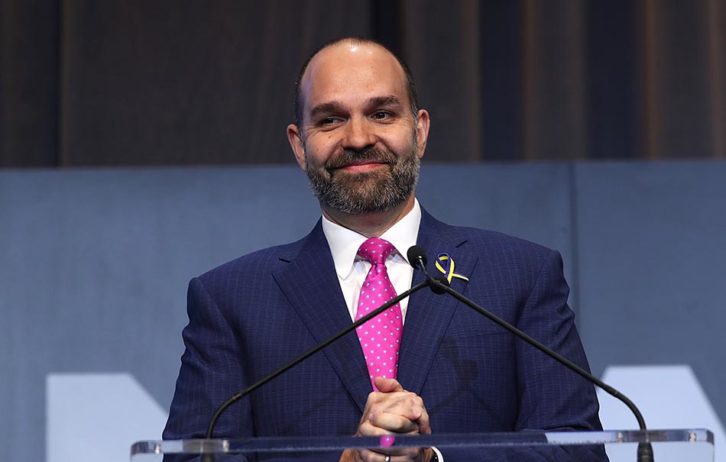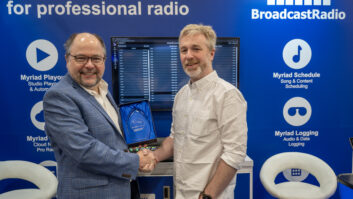Curtis LeGeyt, president and CEO of the National Association of Broadcasters, wasn’t about to take this sitting down. When SiriusXM emailed a marketing campaign earlier this week disparaging AM and FM radio, LeGeyt fired off a blog that meets the satellite radio broadcasters’ scorn head on.
LeGeyt on Thursday countered the SiriusXM attack ads bashing terrestrial radio — complete with the tagline “Why waste your time with AM/FM radio?” — with reasons of his own on why local radio is the most-listened to audio platform and is the envy of the competition.

“Instead of turning a blind eye to SiriusXM’s disingenuous efforts, this is an opportunity for radio to continue spotlighting the incredible role we play in keeping listeners entertained, informed and engaged,” LeGeyt blogged.
LeGeyt’s online response, which he titled “SiriusXM is Siriusly Wrong About Radio,” takes aim at subscription radio and does a deep dive into what makes traditional broadcast radio unique.
“What truly sets us apart is the connection we provide listeners to their neighbors and communities. No other audio platform is locally based in the cities and towns we serve. Broadcast radio is the voice of local communities, providing news, information and programming that meet local needs and interests,” said LeGeyt.
[Visit Radio World’s News and Business Page]
The leader of the NAB said broadcast radio continues to be the leading platform for people to tune in to hear hit music, their favorite DJs, the latest songs by today’s hottest musicians and new tracks from emerging artists. “Yet, what truly sets us apart is the connection we provide listeners to their neighbors and communities. No other audio platform is locally based in the cities and towns we serve. Broadcast radio is the voice of local communities, providing news, information and programming that meet local needs and interests.”
The email from SiriusXM poo pooing broadcast radio this week gave LeGeyt the chance to highlight the fact that radio listeners don’t have to fork over a monthly subscription fee since AM and FM radio is always free.

And LeGeyt’s blog says broadcasters are embracing innovation to expand local service to Americans wherever and whenever they want. “Many stations are simulcasting their broadcasts online, helping listeners to tune in through their mobile devices and smart speakers. Broadcasters are leveraging their audio expertise through podcasting, offering expanded programming, serialized storytelling and a platform for unique community voices,” he commented.
He also didn’t miss the opportunity to tout radio’s efforts to remain a force in the connected car and its new operating systems like Android Auto and Apple CarPlay. NAB is currently working with automakers to strengthen the relationship between broadcasting and the car, he said.
LeGeyt continued: “NAB’s Auto Committee is dedicated to optimizing radio’s place in the digital dashboard and ensuring an innovative, enjoyable experience for passengers who want to listen to their favorite local stations. PILOT, NAB’s innovation wing, is also advancing broadcast technologies and pushing new partnerships to help radio realize its full potential in automobiles of the future.”
In conclusion, LeGeyt paints radio as a life-saving service, more so than a satellite radio service with no local service whatsoever: “There is no better demonstration of the importance of radio’s localism than when disaster strikes. During times of emergency, Americans are not told to turn to SiriusXM for lifeline information.
“They are not going to get emergency alerts, hear up-to-the-minute reporting or find out where to get help on Pandora or Spotify. No other audio medium can replicate our service when lives are in danger.”
And it’s all free.







